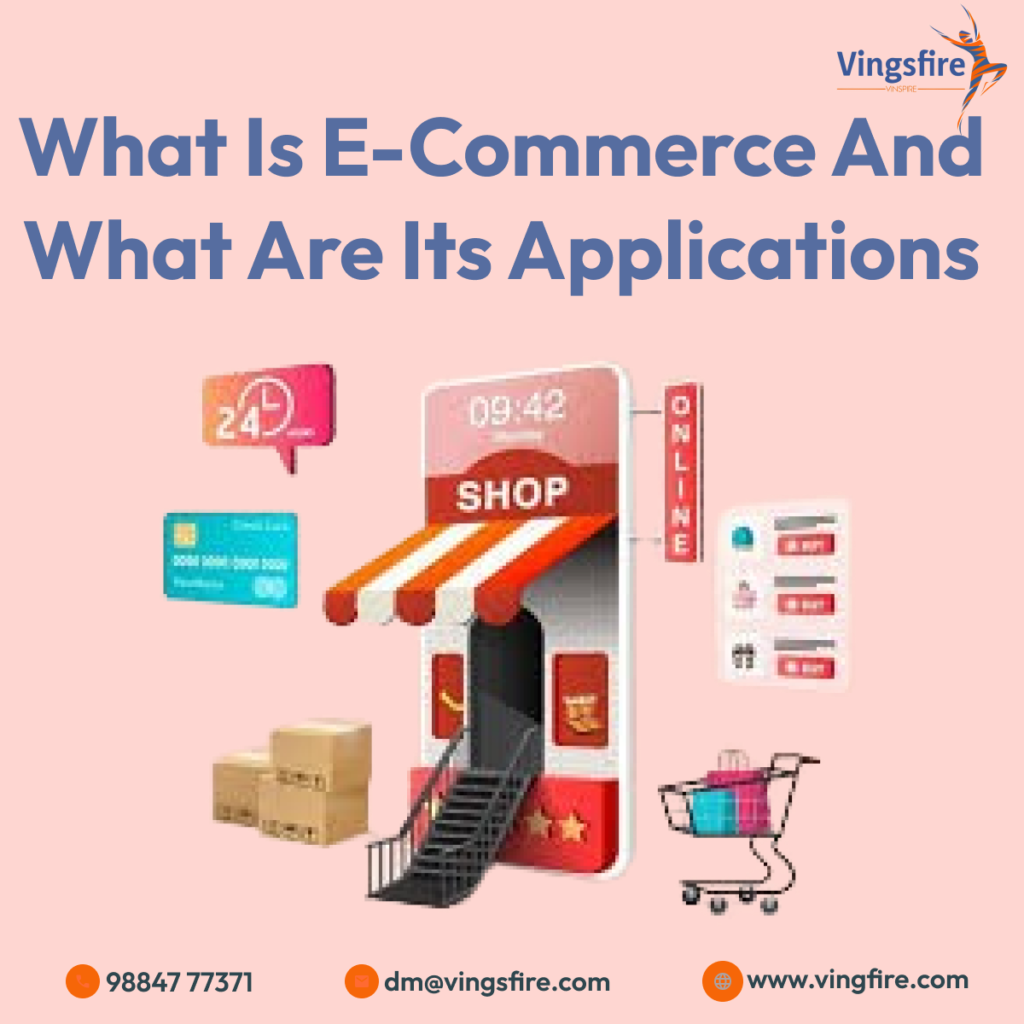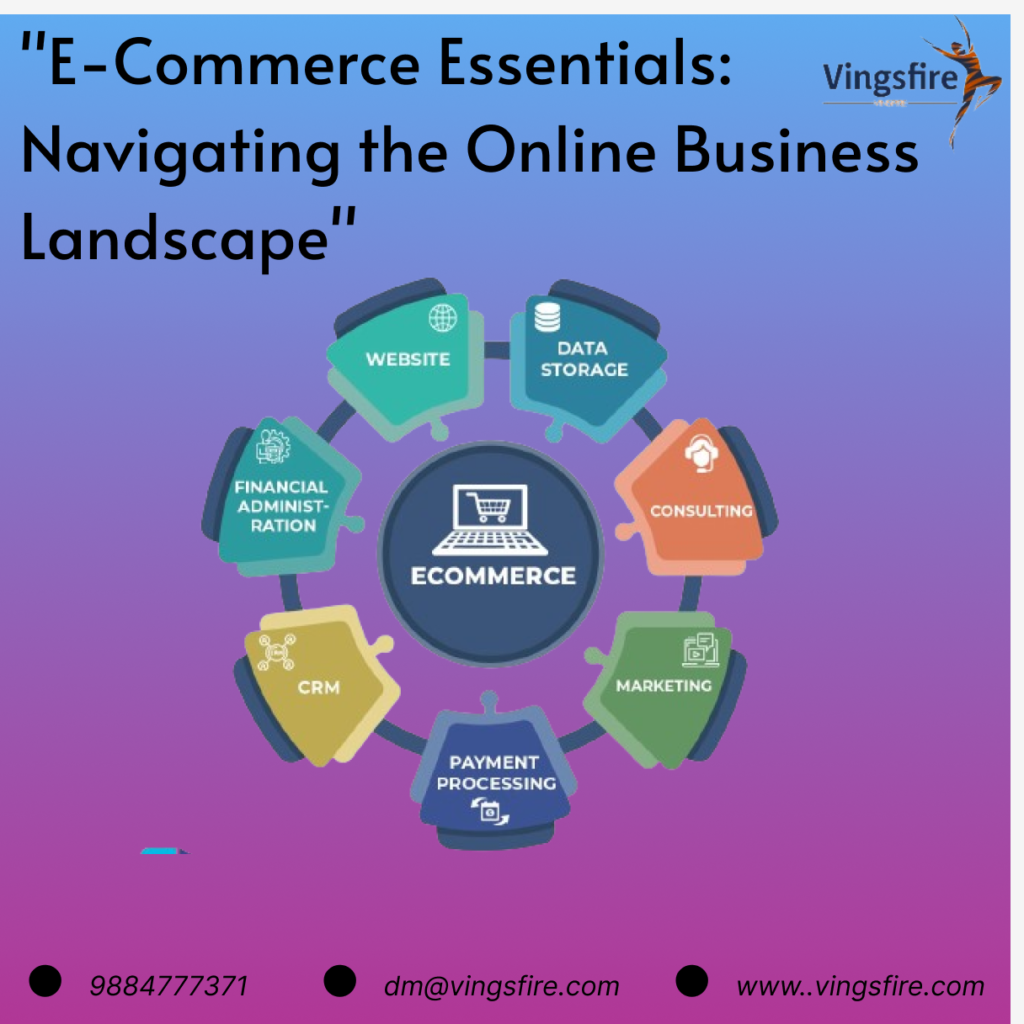
Definition of E-Commerce
E-commerce, short for electronic commerce, is a revolutionary concept that has transformed the way businesses operate and how consumers engage in commerce. At its core, e-commerce involves the buying and selling of goods and services over the internet. This digital exchange eliminates geographical barriers, allowing transactions to occur seamlessly between individuals, businesses, and even governments.
In the realm of e-commerce, transactions take various forms, including online retail, electronic payments, online auctions, and internet banking. The advent of e-commerce has fundamentally reshaped traditional commerce models, bringing unparalleled convenience to both consumers and businesses.
Significance in the Digital Age
The significance of e-commerce in the digital age cannot be overstated. As we navigate an era characterized by rapid technological advancements, e-commerce emerges as a catalyst for economic growth and global connectivity. Its importance lies not only in facilitating transactions but also in fostering innovation, efficiency, and accessibility.
In the digital age, consumers are empowered with the ability to browse and purchase products or services at any time and from anywhere with an internet connection. This convenience has redefined the consumer experience, making it more personalized and responsive to individual needs.
Moreover, e-commerce serves as a cornerstone for small and large businesses alike, providing a platform to reach a global audience without the need for extensive physical infrastructure. The ability to adapt and leverage digital tools positions businesses strategically in an evolving market landscape.
The growth trajectory of e-commerce has been nothing short of remarkable. From its humble beginnings in the late 20th century to the present day, e-commerce has witnessed exponential expansion. The increasing prevalence of internet access, coupled with advancements in payment gateways and security measures, has fueled this growth.
Statistics reveal a consistent upward trend in e-commerce sales globally, with projections indicating continued expansion. The diverse landscape of e-commerce encompasses various models, from business-to-consumer (B2C) to business-to-business (B2B) and beyond. E-commerce platforms have evolved to offer seamless and secure transactions, catering to the diverse needs of both consumers and businesses.
In conclusion, the definition, significance, and growth of e-commerce illustrate its transformative impact on the way we conduct business and engage in economic activities. As we delve deeper into the intricacies of e-commerce, it becomes evident that its influence extends beyond transactions, shaping the digital landscape and the future of commerce itself.
The roots of e-commerce can be traced back to the early days of the internet. In the 1960s, businesses started using Electronic Data Interchange (EDI) to facilitate electronic transactions. EDI allowed the exchange of business documents, such as purchase orders and invoices, between companies using a standardized format. While this was an early form of electronic commerce, it was limited to large corporations with the necessary infrastructure.
The true birth of e-commerce, as we recognize it today, occurred in the 1990s with the rise of the World Wide Web. The launch of websites like Amazon and eBay in the mid-90s marked the beginning of online retail. These platforms provided a virtual marketplace where consumers could browse, select, and purchase products online.
First Online Sale (1994): The inaugural online transaction took place in 1994 when a CD by the band Sting was sold on NetMarket.
Amazon and eBay (Mid-1990s): The launch of Amazon in 1995 as an online bookstore and eBay in 1995 as an auction site revolutionized online retail and consumer-to-consumer transactions.
Introduction of PayPal (1998): PayPal emerged as a secure online payment solution, providing a foundation for secure financial transactions on the internet.
Dot-com Boom (Late 1990s): The dot-com boom saw a surge in the number of e-commerce startups, shaping the competitive landscape and driving innovation.
Mobile E-Com (2000s): The widespread adoption of smartphones in the 2000s facilitated the growth of mobile commerce, allowing users to make purchases using mobile devices.
Key Technological Advancements
Secure Sockets Layer (SSL): SSL encryption, introduced in the mid-1990s, enhanced the security of online transactions by encrypting data exchanged between the user’s browser and the website.
Content Management Systems (CMS): The development of CMS platforms like WordPress and Joomla simplified the creation and management of e-commerce websites.
Data Analytics and Personalization: Advanced analytics tools enable businesses to analyze customer behavior, personalize recommendations, and optimize the online shopping experience.
Blockchain Technology: The advent of blockchain brought transparency and security to online transactions, particularly in areas like cryptocurrency and smart contracts.
Artificial Intelligence (AI) and Machine Learning (ML): AI and ML are employed for predictive analytics, chatbots, and personalized customer experiences, revolutionizing how businesses interact with consumers.
In summary, the origins of e-commerce date back to the early days of the internet, with significant milestones and technological advancements shaping its development. As we continue to witness the evolution of e-commerce, these historical foundations and innovations pave the way for a dynamic and interconnected digital ma as a broad concept, encompasses several models that facilitate online transactions. Each type caters to specific relationships between buyers and sellers, contributing to the dynamic and evolving nature of the digital marketplace.
A. Business-to-Consumer (B2C)
Definition: B2C e-commerce involves transactions between businesses and individual consumers. It is the most common form of online shopping, where businesses sell products or services directly to end-users.
Examples: Online retailers such as Amazon, Alibaba, and fashion brands’ websites fall under B2C.
B. Business-to-Business (B2B)
Definition: B2B focuses on transactions between businesses. It involves the exchange of goods and services between companies as part of their supply chain or business operations.
Examples: Wholesale marketplaces, manufacturing suppliers, and platforms facilitating bulk purchases for businesses exemplify B2B
C. Consumer-to-Consumer (C2C)
Definition: C2C enables consumers to sell products or services directly to other consumers. It often involves a third-party platform that facilitates these transactions.
Examples: Online auction platforms like eBay and classified advertisement websites like Craigslist operate on a C2C model.
D. Consumer-to-Business (C2B)
Definition: C2B reverses the traditional consumer-business relationship. In this model, individuals or consumers offer products or services, and businesses are the buyers.
Examples: Influencers or content creators selling sponsored content or individuals providing freelance services on platforms like Fiverr operate within the C2B framework.
E. Business-to-Administrator (B2A)
Definition: B2A involves transactions between businesses and public administrations or government bodies. It includes online government services, procurement, and licensing.
F. Consumer-to-Administrator (C2A)
Definition: C2A e-commerce involves transactions between individual consumers and public administrations or government agencies. It includes online services, fee payments, and information retrieval.
Examples: Online payment of utility bills, applying for government permits online, and accessing public information through government portals fall under C2A.
Understanding these types of e-commerce is crucial for businesses aiming to establish a robust online presence. Each model caters to specific market dynamics, and businesses often leverage multiple types of e-commerce depending on their products, services, and target audiences. As technology continues to advance, new models may emerge, contributing to the ever-evolving landscape of digital commerce.
E-commerce platforms play a pivotal role in the digital landscape, providing businesses with the tools and infrastructure to establish, operate, and scale their online presence. These platforms offer a diverse range of features, catering to the specific needs of businesses and facilitating seamless online transactions. Let’s delve into the key aspects of e-com platforms.
1. Shopify:
Overview: Shopify stands out for its user-friendly interface and comprehensive features. It caters to businesses of all sizes, offering customizable templates, secure payment options, and a built-in content management system.
Strengths: Quick setup, extensive app ecosystem, and scalability.
2. WooCommerce (WordPress):
Overview: WooCommerce is a plugin for WordPress, turning a website into a fully functional e-com store. It’s highly customizable, integrating seamlessly with existing WordPress sites.
Strengths: Integration with WordPress, flexibility, and a large community.
3. Magento:
Overview: Magento is an open-source platform known for its scalability and flexibility. It caters to large enterprises and offers a robust set of features for customization.
Strengths: High scalability, flexibility, and a robust community.
4. BigCommerce:
Overview: BigCommerce is a cloud-based platform that caters to businesses of all sizes. It offers a range of features, including hosting, security, and various built-in tools.
Strengths: All-in-one solution, scalability, and strong SEO capabilities.
5. Wix:
Overview: Wix is a website builder that includes e-commerce functionality. It’s known for its drag-and-drop interface and is suitable for small to medium-sized businesses.
Strengths: User-friendly, extensive design options, and affordable.
II. Comparison of Leading Platforms
1. Ease of Use:
Shopify and Wix are known for their user-friendly interfaces, making them suitable for beginners.
Magento, while powerful, may have a steeper learning curve.
2. Scalability:
Magento and Shopify are renowned for their scalability, catering to businesses with diverse growth trajectories.
Wix and WooCommerce are suitable for smaller businesses but may have limitations as they grow.
3. Customization:
WooCommerce and Magento provide extensive customization options, making them ideal for businesses with specific needs.
Shopify and BigCommerce offer customization within predefined structures.
III. Choosing the Right Platform for Your Business
1. Business Size:
Small businesses might prefer user-friendly platforms like Shopify or Wix.
Larger enterprises with complex needs may opt for Magento or BigCommerce.
2. Budget:
Wix and WooCommerce are often more budget-friendly, especially for startups.
Magento may require a larger initial investment but offers scalability for growing businesses.
3. Technical Requirements:
Consider the technical expertise required for setup and maintenance.
Cloud-based solutions like Shopify and BigCommerce may be more accessible for businesses with limited technical resources.
As technology advances, e-commerce platforms continuously evolve to meet the changing demands of businesses and consumers. Regular updates, new features, and enhanced security measures contribute to the longevity and effectiveness of these platforms in the competitive world of online commerce.
In conclusion, the choice of an platform is a crucial decision that can significantly impact the success of an online business. Whether you’re a budding entrepreneur or an established enterprise, understanding the strengths and considerations of different platforms is essential for building a robust and sustainable online presence. Choose wisely, adapt to the evolving landscape, and harness the power of e-com platforms to drive your online success.
Background: Founded by Jeff Bezos in 1994, Amazon started as an online bookstore and rapidly expanded into a global and technology conglomerate.
Key Success Factors:
Customer-Centric Approach: Amazon prioritizes customer satisfaction through a seamless shopping experience, personalized recommendations, and fast delivery.
Diversification: Constantly expanding product offerings, from books to electronics, groceries, and cloud services.
Innovation: Investments in technology, such as Alexa and Prime, demonstrate a commitment to staying ahead in the market.
2. Alibaba: Connecting Buyers and Sellers Worldwide
Background: Jack Ma founded Alibaba in 1999, aiming to create a platform that connects Chinese manufacturers with global buyers.
Key Success Factors:
B2B Focus: Alibaba’s emphasis on business-to-business transactions facilitated international trade and positioned the company as a global e-com leader.
Ecosystem Approach: Expanding beyond to include cloud computing, digital entertainment, and financial services.
Global Vision: Extending services globally, fostering international trade partnerships.
3. Zappos: Revolutionizing Online Shoe Retail
Background: Founded by Tony Hsieh in 1999, Zappos redefined online shoe shopping with its emphasis on customer service and an extensive product selection.
Key Success Factors:
Exceptional Customer Service: Zappos became known for its outstanding customer service, including free shipping and a generous return policy.
Company Culture: A unique company culture that values employee happiness and prioritizes customer satisfaction.
Diversified Product Range: Expanded beyond shoes to include clothing and accessories.
B. Lessons Learned from Failures
1. Pets.com: The Dot-Com Bust
Background: Launched in 1998, Pets.com was an online pet supply retailer during the dot-com era.
Lessons Learned:
Premature Expansion: Aggressive expansion without establishing a solid customer base or addressing logistical challenges led to financial strain.
Costly Marketing: High-profile advertising campaigns did not translate into sustained customer loyalty.
Failure to Address Logistics: Inefficient logistics and high shipping costs contributed to unsustainable business operations.
2. Webvan: Overambitious Growth
Background: Webvan, founded in 1996, aimed to revolutionize grocery delivery but faced significant challenges.
Lessons Learned:
Overexpansion: Webvan expanded rapidly without establishing profitability, resulting in financial difficulties.
Infrastructure Challenges: The company struggled to manage complex logistics and delivery systems.
Lack of Consumer Adoption: Despite innovation, there was insufficient consumer adoption of online grocery shopping at the time.
3. Quirky: Crowdsourced Product Development
Background: Quirky, founded in 2009, aimed to revolutionize product development through crowdsourcing.
Lessons Learned:
Unsustainable Model: Relying heavily on crowdsourcing led to a lack of quality control and scalability challenges.
Financial Strain: High operational costs and low product margins contributed to financial difficulties.
Failure to Pivot: Inability to adapt and pivot the business model in response to challenges.
Conclusion
Examining both successful and failed ventures offers valuable insights for aspiring entrepreneurs and established businesses alike. Success stories highlight the importance of customer-centric approaches, innovation, and strategic diversification. On the other hand, lessons from failures underscore the significance of sustainable growth, addressing logistical challenges, and adapting to market dynamics. By learning from these cases, businesses can make informed decisions, mitigate risks, and build resilient e-strategies for long-term success.












